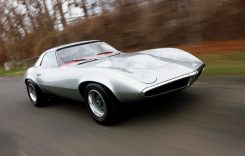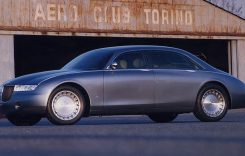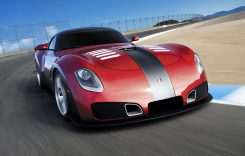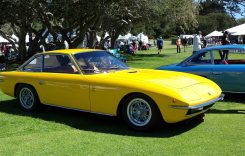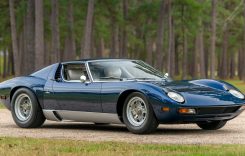The Monster has been a critical model for Ducati’s brand allegiance. Over the past two decades it has developed a cult-like following worldwide for its iconic styling and signature air-cooled L-Twin engine. And while its design has been modernized with liquid-cooling and four-valve cylinder heads, its clear Ducati is staying true to its roots with the Monster 1200 S ($15,999).

We’ve always been attracted to the Monster’s clean, uncluttered lines but with the addition of water-cooling much of the engine is now hidden in plastic, in contrast to the Duke’s tidy appearance. Another visual strike is that the function of the all-digital color instrument display is illegible in daylight.
Swing a leg over the Monster and it’s a familiar riding position for those that have spent time with its previous incarnations. It offers a giant, forward-mounted handlebar that doesn’t quite match the flow of the seat or foot controls. Compared to the KTM’s more organic but slightly-more dirt bike oriented ergonomics, the Monster feels cramped below the waist, and more aggressive and stretched-out above. Though if you’re a smaller rider, there’s a good chance you’ll appreciate its two-inch lower seat (in the low setting).
“You’re leaning [forward] over a little too much with the Ducati,” says Jason Abbott (5’11”), resident test rider for MotoUSA’s sister publication, Cycle News. “The Monster was nice in the corners but didn’t feel as pleasant on the highway, where the more upright KTM felt better.”
(Top) Although the Monster 1200’s L-Twin lacks the outright muscle of the KTM we actually preferred its smoother and more direct feel. Covered in plastic, it doesn’t look as elegant as the Super Duke’s Twin. (Center) The Monster sports larger 330mm discs with the same spec M50 Brembo calipers as the KTM. However the Ducati’s ABS system proved more effective at reducing stopping distance. (Bottom) The Monster’s rider seat is two inches lower than the KTM. Padding and support-wise it is equally as cozy as the Duke’s.
Despite having an inch-longer wheelbase (59.5 in.), the Ducati remains maneuverable through turns. Some of the credit goes to its favorable center of gravity compared to the more top-heavy 1290. On the scales the Monster weighs three pounds less (465 pounds) than the KTM.
“I felt the most comfortable with that bike in the canyons,” says Abbott of the Ducati. “It cornered really well. But the suspension moved around a little bit more than I would like it to.”
Slowing down the movement of the suspension made for a more controlled ride and we value the spring preload adjustment of the Monster’s Ohlins fork in contrast to the non-adjustable fixed rate set-up of the Duke. We also love the superb level of road feel compared to the WP unit. Though, to be fair, some of the kudos goes to the OE-fitted Diablo Rosso II tires by Pirelli compared to the mediocre performing European pavement-specific Dunlop Sport Smart 2 tires.
In terms of damping adjustment, while the Ohlins shock offers tool-less adjustment (nifty knobs atop the shock body) it doesn’t on the fork. Its vice-versa with the Orange machine, which offers clever red compression adjustment knobs atop each leg but rear suspension adjustment still needs to be done manually with a screwdriver. While both suspension set-ups are adept at absorbing rough pavement we preferred the KTM’s damping as it gave the best compromise between sport and comfort.
The Monster and Super Duke are evenly matched with their braking hardware. However, the Ducati’s racing-spec M50 monobloc calipers clamp down on a pair of 10mm larger discs up front. In action, the Brembo anchors feel identical with superb stopping sensation and power. Although the Italian bike sports a slightly larger rear disc it isn’t as sharp feeling as the Orange bike, which took top points in the Brakes scoring category.
With ABS enabled (Level 1, least restrictive setting), the 1200 was able to stop in a shorter distance (16.4 feet) proving how well Ducati calibrated the ABS system. Conversely, when the electronics were disabled, the Monster required an extra 9.2 feet to stop from 60 mph. This was a bit of a surprise, since the Duc’s fork wasn’t as divey as the KTM and because it wears a higher-spec front tire.
Monster 1200 S Settings
Suspension
Fork
Preload: 6 (turns in)
Compression: 3 (turns out)
Rebound: 5
Shock
Preload: Stock
Compression: 3.5
Rebound: 1
Drivetrain
Power Mode: Sport
ABS: 1
DTC: 2
In the displacement battle, the Ducati’s 1198cc engine gives up 103cc to KTM’s giant 1301cc mill. That hurt it on the dyno where it generated less torque and horsepower throughout its 10,400 rpm range. When compared peak-to-peak, the Monster pumped out 10.05 ft-lb less and a whopping 21.61 fewer ponies.
In spite of its power deficiency, on the road the Monster didn’t disappoint. Twist the right grip and the 1200 drives hard off turns. While we love the engine’s deep guttural roar, the exhaust note sounds tinnier, and less ear-pleasing as the Super D. It’s also much louder too, cracking the 103 dB mark at half of its maximum rpm (5200 revs).
Looking at the dyno chart shows how smooth and dead-flat the torque curve is. The throttle and engine also have a more direct feel than the KTM, which gives a more ‘connected’ feel between man and machine, making it easier to control. Fuel efficiency is another plus as it recorded a 35.6 mpg average versus the KTM’s 34.4 mpg figure, netting a range of 163 miles despite its 0.6-quart smaller fuel tank.
“The power delivery on the Ducati is silky-smooth,” says Abbott. “It wasn’t slow whatsoever. You crack the throttle and it would get up and go like nobody’s business.”
(Top) The Monster 1200 feels longer and lower than the Super Duke. It hugs the pavement well and we love the road feel from its Ohilns fork. (Center) Our test rider, Jason Abbott felt more comfortable aboard the Monster with it giving a more forgiving ride than the hyperactive Super Duke. (Bottom) The cockpit of the Ducati is signature Monster with a low seat, racy rider foot pegs and a giant, forward-mounted handlebar.
Although the transmission ratios and final drive gearing aren’t as close-ratio as the KTM, the Ducati’s engine felt snappier and quicker to rev. It was also easier to launch from a stop due to its longer wheelbase and more sedate bottom-end power. Still, it wasn’t enough to overcome the KTM’s muscle in the acceleration tests with the red bike 0.19-seconds behind the Duke to 60 mph. It was also slower through the quarter-mile with a sprint of 11.30 seconds at 127.6 mph—0.44-second and 7 mph slower than the Austrian bike.
Nevertheless numbers aren’t everything as Abbott explains, “I feel like the Ducati’s [engine] was more useable. The delivery was smoother and the overall delivery and the way that the power was put to the ground made more sense.”
Working in the Ducati’s favor are well-sorted electronics coming from years of development (Ducati has offered traction control on its motorcycles from 2008). The traction control offers eight levels of adjustment that can be adjusted independently of the three engine power modes (Rain, Urban and Sport). From a safety standpoint the traction control worked well at keeping the rear tire in line with the front during extremely fast-paced rides.
We’re not going to argue that the 1200 is the best Monster yet. With its ever-evolving electronics and the extreme versatility in terms of both engine and suspension settings it’s possible to fine-tune the Ducati to each rider’s tastes. And while it scored well in half of the objective performance categories it was clearly second-rate to the KTM on our note pads.
